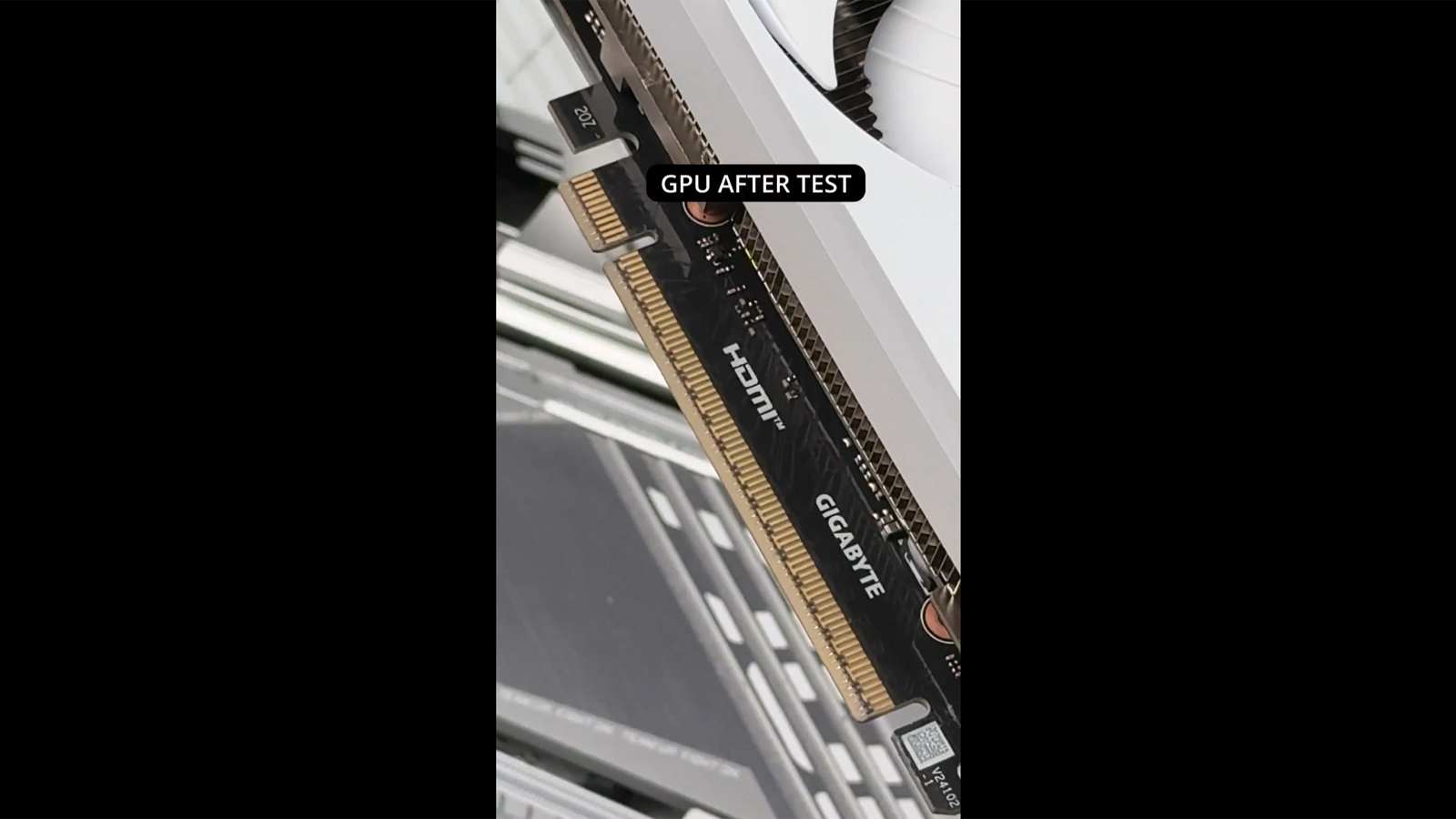Gigabyte posted a video on itsX accountshowing a user removing and installing a GPU on its EZ Latch Plus-equipped Z890 Aorus Elite WiFi7 Ice motherboard a hundred times, displaying no damage to its PCIe pins. While the video demonstrates the company’s EZ Latch Plus mechanism, it also takes a subtle jab at Asus' Q-Release Slim mechanism.
Last January, many users reported that Asus’s Q-Release Slim feature, which lets you remove GPUs just by twisting it by two degrees and then pulling it out, wasdamaging GPU PCIe connectors. Asus hasalready released a statementsaying that the damage to the GPUs is cosmetic and doesn’t affect function or performance. The damage is seemingly cosmetic. Furthermore, the damage only starts to become noticeable when you remove and reinstall the GPU after several dozen times.

Asus called it a wear-and-tear issue due to “60 continuous insertions and removals.” Asus China says it will handle any issues that arise from the Q-Release Slim, and severalusers from Chinahave received complete motherboard replacements, among other things. How the company handles the damaged GPUs outside of China remains unclear.
Quick-release features are helpful for those who build and maintain their own PCs. As GPUs and other components become larger and larger, it’s getting much more difficult to access the latch or screw that secures add-in boards to the mainboard. Before Asus introduced the Q-Release Slim, it already had a push-button solution with Q-Release, which releases the latch on the PCIe slot that secures the card. Gigabyte’s EZ Latch Plus works similarly to Q-Release, where you need to press a button, and you’re able to then just lift the GPU (or any other PCIe card) from the slot.

But even though this makes it far more convenient to remove GPUs from the motherboard, you still must reach into it to press the release button. This won’t be an issue if you have a relatively small, air-cooled card and no other big components. But if you have a giantRTX 4090orRTX 5090GPU (or maybe even two of them), plus a massive heat sink for your CPU (or perhaps even a hardline water-cooling system), reaching inside your PC to press the quick-release button without touching any other part or component of your PC might still be tricky.
Get Tom’s Hardware’s best news and in-depth reviews, straight to your inbox.

Jowi Morales is a tech enthusiast with years of experience working in the industry. He’s been writing with several tech publications since 2021, where he’s been interested in tech hardware and consumer electronics.